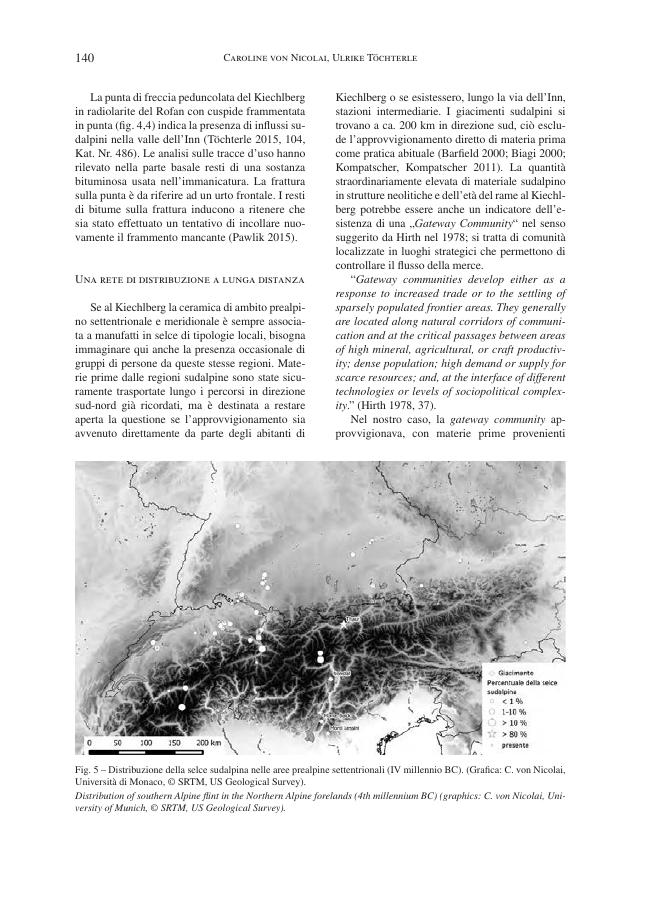La rete della selce
P. 135-145
The contacts between Italy and the area north of the Alps were already numerous during the Neolithic and the Chalcolithic. They can be reconstructed in particular on the basis of the flint objects of southern Alpine origin which have been discovered in variable quantities in the northern Prealpine forelands of Austria, southern Germany and Switzerland, albeit generally decreasing in number northwards. In the Neolithic settlement on the Kiechlberg, situated at an altitude of 1,028 m asl north-west of the municipality of Thaur near Innsbruck (Austria), the evidence of long distance contacts between central Europe and Italy is particularly abundant.
During the excavation campaigns organized by the University of Innsbruck in 2007 and 2008, the different relocated cultural layers excavated on the naturally protected hilltop confirmed human frequentation of the Kiechlberg from the final phase of the younger Neolithic (4.050–3.810 BC cal.) to the end of the Early Bronze Age. Many potsherds come from these layers, belonging either to vessels of northern Alpine origin (Münchshöfen, Polling, Pfyn, Altheim and Cham cultures), or to vessels of the Square Mouthed Pottery culture (above all phase III). Concerning the flint industry, 80% of the raw material found at the Kiechlberg site confirms the importation of flint originating south of the Alps (especially from Monti Lessini, the Monte Baldo region and the Non Valley), whereas the northern Alpine sources of raw material (above all Baiersdorf and Flintsbach) were consequently less exploited.
The excavations on the Kiechlberg have not only revealed objects made of copper but also evidence of copper smelting activities and of the processing of copper ores since the Copper Age. These facts illustrate the importance of the Kiechlberg as a place of contact and exchange between both sides of the main Alpine ridge. Based on this site, this paper examines the modes and channels of communication between Italy and continental Europe during the Late Neolithic and the Chalcolithic. The raw materials and artefacts made of flint of southern Alpine origin attested in the northern Prealpine forelands are used as proxies to reconstruct the long-distance distribution routes, as well as the mobility and interactions between the Neolithic and Chalcolithic communities north and south of theAlps. To understand this flint distribution network, the use of a GIS and a social network analysis appear to be appropriate instruments. [Publisher's text]
Forma parte de
Rivista di scienze preistoriche : LXX, supplemento, 2020-
Artículos del mismo número (disponibles individualmente)
-
Información
Código DOI: 10.32097/1121
ISSN: 2282-457X



